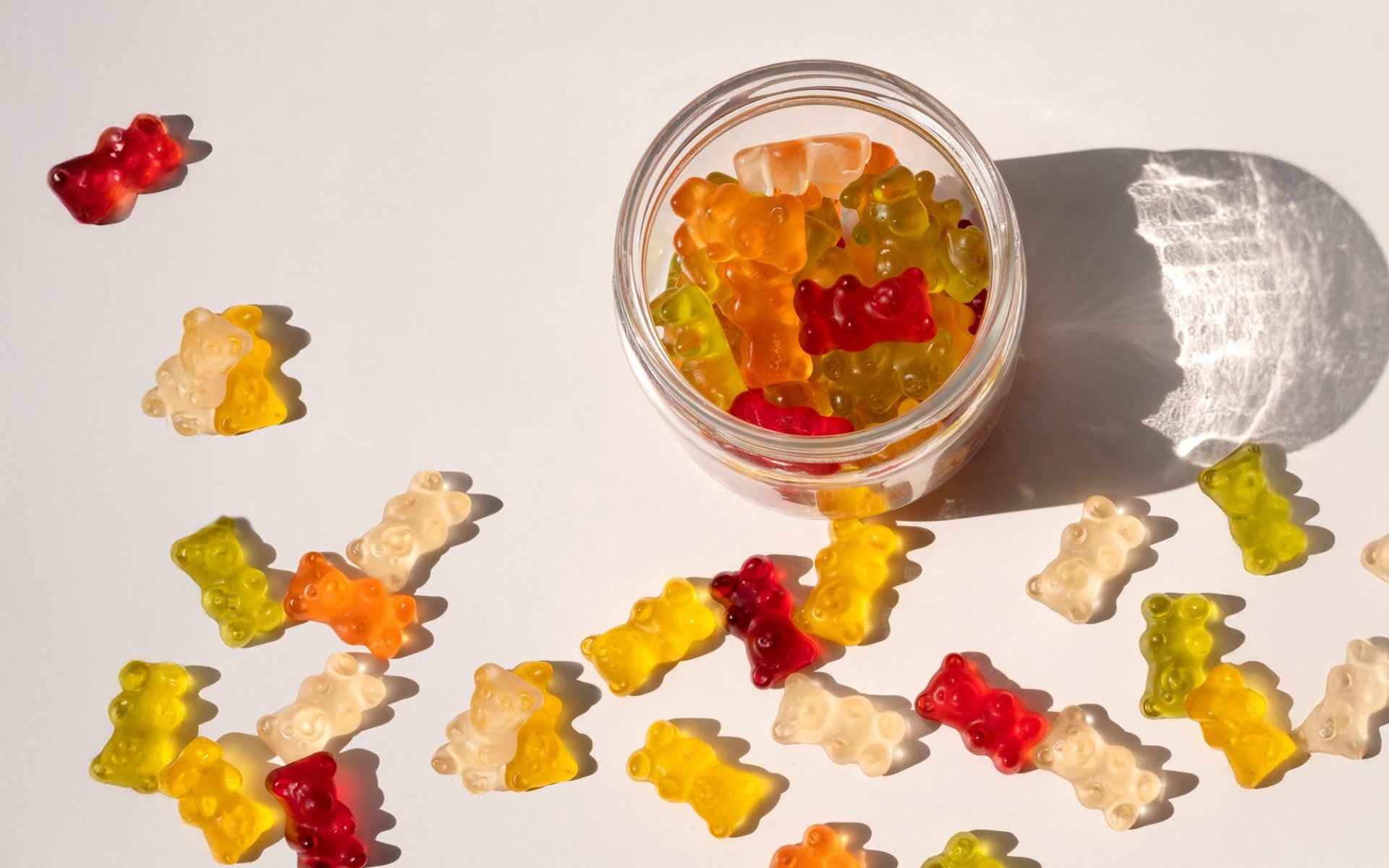Gummy Bear

About a century ago, in 1920, Hans Riegel Sr., a German confectioner, felt disheartened with his regular job. He resigned to start his own business, founding the candy company Haribo, an abbreviation derived from his name and his hometown, Bonn, Germany (Hans Riegel Bonn).
The Birth of the "Dancing Bear," the World's First Gummy Bear
When he first started his business, he produced hard candies, which his wife would sell by bicycle in various places. His candies sold quite well, but not as well as he had hoped. Not long after, in 1922, he launched a new confection: soft, fruit-flavored gelatin in the shape of dancing bears. He called this new candy Dancing Bear, or Tanzbären in German, inspired by the dancing bears that entertained children at festivals across Europe.
These early gummy bears differed slightly from the gummy bears we know today. They were larger and thinner, and their shape resembled actual bears more closely than the small, cartoon-like bears we see now. When this candy was launched, it became immensely popular among German children, forcing him to increase production. From a family business run by just the husband and wife, by 1930, his company had grown to more than 400 employees. In the same year, he introduced a new slogan: Haribo macht Kinder froh or Haribo makes children happy.
Haribo During Wartime and Its Revival
Just as the business was thriving, the outbreak of World War II abruptly halted Haribo's success. Riegel Sr. passed away in 1945 at the age of 52. Furthermore, his two sons, Paul and Hans Riegel, were captured and held in Allied prisoner-of-war camps. During this time, only his wife managed to sustain the business, reducing production to a mere 30 employees.
When his sons were released, they returned to revive the company. Paul oversaw production, and Hans Jr. managed the administration, leading to success by 1950. The two Riegel brothers transformed their father's company into a confectionery powerhouse, expanding their product line and increasing the number of employees from 30 after the war to 1,000. They opened several factories across Europe, exporting their products worldwide, while simultaneously transforming the dancing bear jelly into the cute little golden bear we see today, known as the Gold Bear.
Pioneering Marketing and Global Expansion
As Haribo continued to grow into the 1950s, its executives recognized the benefits of new marketing tools like television. They leveraged this to advertise, making Haribo one of the first companies in Germany to advertise on television. This significantly boosted the popularity of their products.
Although Haribo had been popular in Europe for decades, in 1982, the company expanded into the United States. Their launch in America faced intense competition, as several American companies produced similar gummy candies.
However, Haribo managed to prevail over its American competitors by adding more flavors and colors, experimenting with various fruits like raspberry, orange, lemon, pineapple, and strawberry. This led to a wide array of colorful gummy bears, catering to diverse tastes and preferences. They also began distributing their products in supermarkets and other major retailers, making the Gold Bear a sought-after sweet among Americans.
Gummy Bears in Pop Culture and the Thai Market
The popularity of gummy bears became so widespread in the United States that Walt Disney used them as inspiration for the animated series Adventures of the Gummi Bears in 1985. When this animation aired, the popularity of gummy bears soared, making them known worldwide.
The key to Haribo's success lies in its consistent quality and continuous marketing, as well as the strength of its continued family ownership by the Riegel family, now in its third generation. Paul passed away in 2009, and Hans passed away in 2013, leaving their nephew, Hans-Guido, to lead the company today.
Today, Haribo gummy bears sold in Thailand are imported from Turkey, produced by Pamir Gida San. A.S. Haribo in Istanbul, and distributed by Sino-Pacific Trading (Thailand) Co., Ltd. However, Thailand also has its own companies producing gummies, such as Jolly Bear and Jolly Cola, which are fruit-flavored gummy bears and cola-flavored bottle-shaped jellies, respectively.


